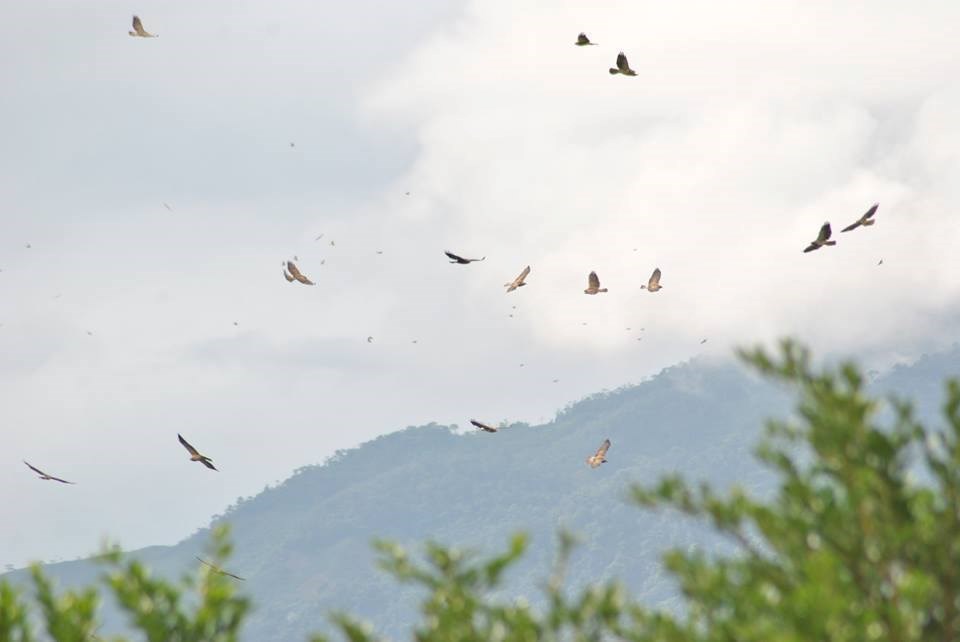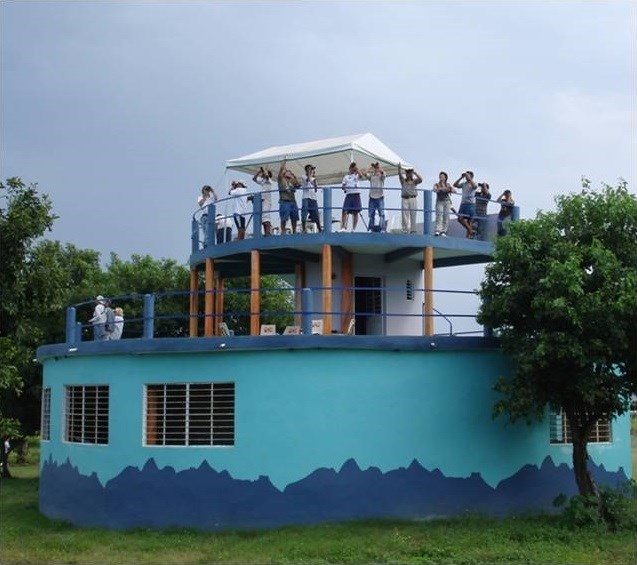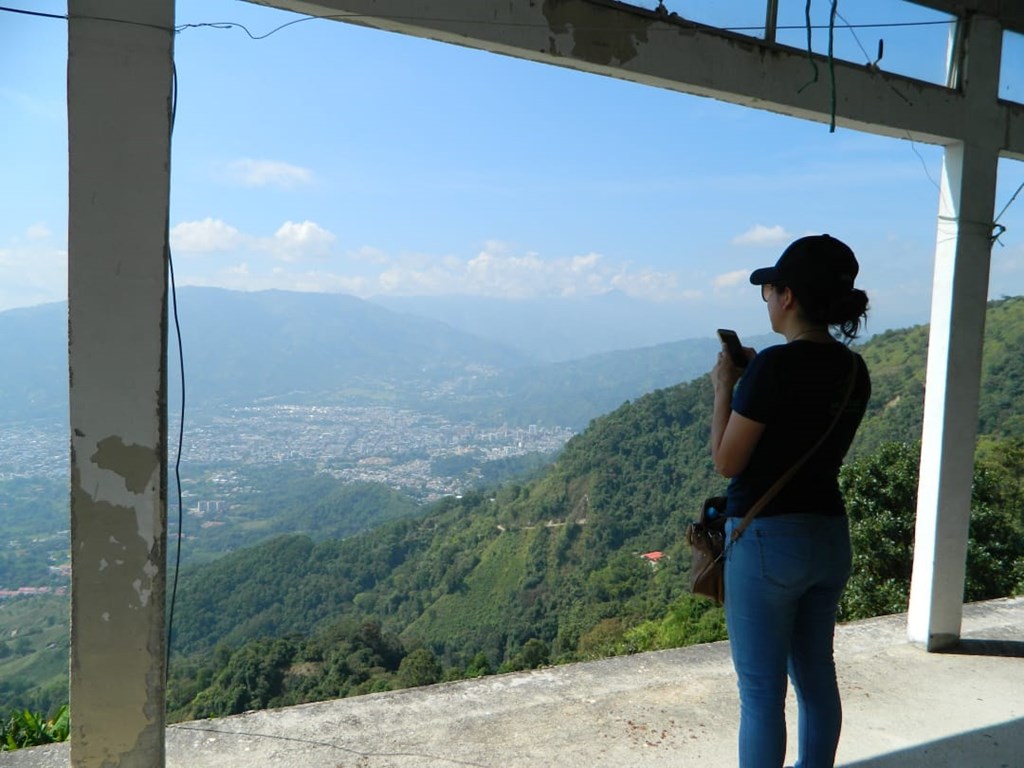Conserve the Corridor
Posted on February 20, 2021 in Science

Written by Jaden DeFazio
Since its inception in 1934, Hawk Mountain Sanctuary has sought to extend conservation efforts beyond its roots to areas like the extensive Central and South American flyway, the most concentrated route for raptor migration in the world. As a leader in raptor conservation, Hawk Mountain understands the need for conservation and education at every phase of the raptor life cycle. This understanding has led to groundbreaking conservation efforts in Central and South America over the past three decades.
“In spring 1989, my fiancé and I stood the dusty Palma Sola road running from Gulf coast to the mountains, searching for spring migrating raptors moving north,” recalls the Sanctuary’s Director of Conservation Science, Dr. Laurie Goodrich. “We stopped to scan when it was unwise to move our rental car further. Suddenly the skies filled with broad-winged and Swainson’s hawks swirling overhead, and my breath caught in my throat with awe. Enormous kettles turned into streams, and streams became rivers of hawks sailing north high overhead. A few minutes later, a small Volkswagen beetle pulled up near us and a couple of young guys with binoculars jumped out. A year later, I met one of the occupants, Ernesto Ruelas, and we became partners in a great conservation project.”
Starting in Veracruz, along the Gulf coastal plain of eastern Mexico in the mid-1980s, Ruelas and his college friends began observing birds of prey. They later presented their findings at the Raptor Research Foundation meeting in Veracruz, connecting them to Hawk Mountain’s traineeship program in 1990 and eventually leading to the establishment of the Veracruz River of Raptors watch site. In 1991, Hawk Mountain, HawkWatch International, and Ruelas made the first spring count and began searching for funding to launch the first scientific migration count and raptor education program in Mexico. With grant funding to Hawk Mountain from the National Fish and Wildlife Foundation, the site’s first autumn count in the 1992 tallied an astonishing 2.5 million raptors, highlighting the need for conservation efforts in this region. For the next decade, Hawk Mountain, HawkWatch and Ruelas, working with Pronatura Veracruz, collaborated to monitor raptor and waterbird migration and launch environmental education with the community. Today, Veracruz tallies an average of 4.5 million raptors annually for the highest total at any site in the world.

Over the last thirty years, Hawk Mountain has continued working with the River of Raptors watch site to support and advise Pronatura in its work to manage the region’s first bird observatory, monitor migration, and educate hundreds of local citizens and eco-tourists annually. Dr. Goodrich led one of the first birding tours to Veracruz in 1994 and continues to do so. She has watched the site grow into a landmark site across the globe.
Continued guidance from the Sanctuary after decades of operation helps to ensure the success of international watch sites. Hawk Mountain provides trainee alumni with small grants and assistance to launch monitoring efforts, education, and to produce materials to help spread awareness of the importance of birds of prey within their ecosystems. Currently, the Sanctuary is working to publish a Central American raptor identification guide, a Spanish-language pocket-guide modeled after Hawk Mountain's own Raptor Flight Guide.
“When I was in Panama in 2018, there was an old, ragged Hawk Mountain flight guide in English on the wall that had been wet and dried, wet and dried from being in the rainforest,” Dr. Goodrich said. “That’s when it hit me: they need raptor materials.”
The Central American guide will be distributed to environmental education centers and raptor count sites in the area. These guides will educate the public of the value of the birds of prey and build local pride in the importance of this corridor on the flyway.
The success of the River of Raptors allows the Sanctuary to branch out to other areas along the Central American flyway, recruiting trainees to take invaluable knowledge back to their home countries. The presence of a well-established watch site in Mexico means that neighboring watch sites can build off that success by collaborating and utilizing shared resources.

From a balcony in Tolima, Colombia, 2019 Hawk Mountain trainee Esther Vallejo is working to establish yet another vital site. Colombia is located at the mouth of the Central American corridor, where millions of south-bound birds of prey spill into South America seeking wintering grounds, then funnel north again in spring. Even with constraints caused by COVID-19, Vallejo and her colleagues holed up in their hotel room to observe more than 400,000 northbound raptors of nine species in spring 2020, and nearly 1 million in autumn 2020.
Especially as rural areas of Colombia see a surge in hawk shooting, this research and conservation outreach is imperative. Together with Vallejo, the Sanctuary secured funds to establish count sites in Tolima and Antioquia and to begin community raptor education. These two sites will provide important data on migration patterns for the Swainson’s hawk, broad-winged hawk, western turkey vultures, and Mississippi kites.
To continue its conservation work in this critical flyway with resources for education and conservation, the Sanctuary needs funds from generous donors. Please consider contacting Hawk Mountain today to be a part of this important environmental work helping to better understand, monitor, and protect birds of prey across the world’s greatest flyway.